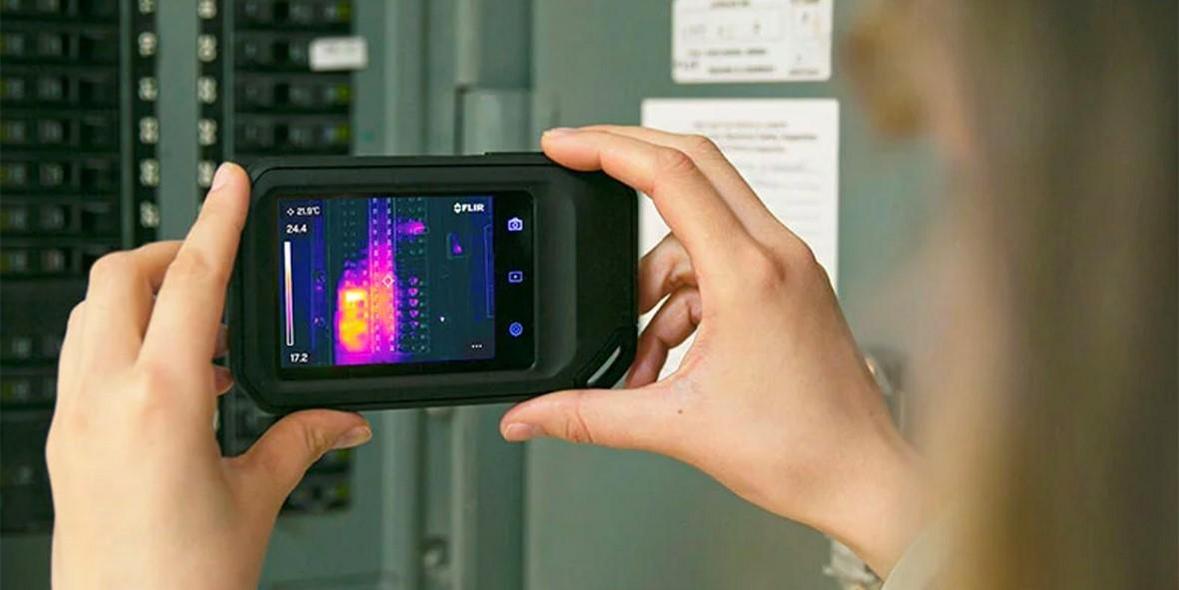14. Apr 2021
Heat Control: using sensors to move from the subjective to the empirical

Simon Buddle explains how investing in some basic temperature sensing equipment can avoid climate control issues with customers and provide supportive data to the KNX professional.
Temperature is probably one of the most emotive areas, in our world, with which we deal. Any parent will know the challenge of trying to keep a coat on a young child in the depths of winter. ‘But mum, I'm sooooo hot', whilst all around are trussed up in scarves, gloves and huge winter jackets. I have lived inside the arctic circle, slept in snow holes and yet have absolutely no stomach for standing in even so much as a tepid shower. And how people break the ice and swim all through the winter in outdoor pools and ponds is beyond baffling!
In general, floors that are 21oC feel cold to the touch and yet outside in the sunshine, 21oC feels decidedly warm. Hot, cold, warm, tepid are, however, subjective terms and not ones that we can easily deal with when they are thrown at us by customers. So for me, there are two fundamental requirements when it comes to temperature; 1) getting an accurate reading, 2) recording that information so that we have it as evidence should we need it.
Temperature sensors
The humble thermistor, typically, costs under GBP£1 to buy. So that part is not at all expensive. However, without one, all kinds of expensive problems could land at our doorstep; damaged wooden floors, sky-high energy bills or even a scolded person. For sensors, there are two important knowledge areas; when and where to use them and what types there are.
Zoned heating
Zoned heating systems require zoned temperature sensors. If the zone is heated via a radiator, then we need one in-room sensor and we are good to go. If, however, the room has underfloor heating, then we really need an in-floor temperature sensor too. Typically, wooden floors should be limited to a surface temperature of 27oC. Electric underfloor is most often used in bathrooms, usually below tiles. These can get extremely hot, so an in-floor sensor is an absolute must in these circumstances. Lots of clients want to use this as comfort heating, i.e., they want the floor to be warm to the touch. That leads to the floor heating being on for long periods of time which creates overheating possibilities. A tiled floor at 45oC is not comfortable, and with electric, that is very possible if we do not have a probe to switch off the zone when it overheats.
Types of sensor
The are many different types of sensor. They fall broadly into two camps: negative temperature coefficient (NTC) and positive temperature coefficient (PTC). With an NTC thermistor, as temperature rises, resistance falls. The reverse is true of PTC thermistors.
Clearly, we must know which type of sensor has been installed if we are to make sense of the output readings. Dig a little deeper and you will find that there are differing types of NTC sensor. For example, the Zennio sensor is an NTC6.8k ohm whereas the Sontay sensors pictured are NTC10k ohm. The numerical value refers to their resistance at a temperature of 25oC. The Arcus SK08 can read 8 PT1000 sensors whilst the Zennio RailQUAD8 can read 8 Zennio sensors or NTC sensors with a different resistance characteristic, but it can only read one other type of NTC sensor, so be careful not to have multiple types!
As I am sure you can see, a careful eye is needed to ensure compatibility and correctly-specified equipment.
Empirical data
Once we are receiving temperature data from the various sensors, we can begin the process of analysis and recording. Floor- and room-temperature readings should be calibrated with test equipment such as a thermal imaging camera to match the readings with the real-world conditions.
Many manufacturers provide the possibility to record data and display it in graph form. This is where we can change the subjective into the objective. In the graphs that I use, four important details are shown: the current actual room temperature, the room's setpoint, the heat demand, and the current floor temperature. I can see from the graph that there is full (100%) heat demand, as well as a sawtooth curve from the floor heating, constantly turning on and off as it exceeds the maximum temperature threshold. This data is vital if we are to be able to show definitively that our KNX system is working correctly, within the bounds of the given parameters.
Conclusion
For less than one pound you can get a thermistor that can give you accurate temperature information, but that information must be correct and there are many pitfalls along the way. The choice of sensor type, KNX device, calibration and recording equipment must all be chosen carefully so that they match each other and provide accurate data. Once you have that data, you have all of the information needed to make alterations to how the controls work or to prove that the system is working properly. It takes us out of the subjective and into the empirical - there is no doubting the facts.
Simon Buddle CEng MIET, is a consultant for Future Ready Homes, a specialist in BMS and ELV services system design.
Highlights
-
 News
NewsThe KNX Journal 2025 is now available
The latest edition of our annual smart home and building solutions magazine has arrived. The KNX Journal 2025 offers ... -
 News
NewsNew ETS App: Password Manager
The ETS Password Manager is a powerful new ETS App introduced in ETS 6.3 that eliminates the need to repeatedly enter ... -

